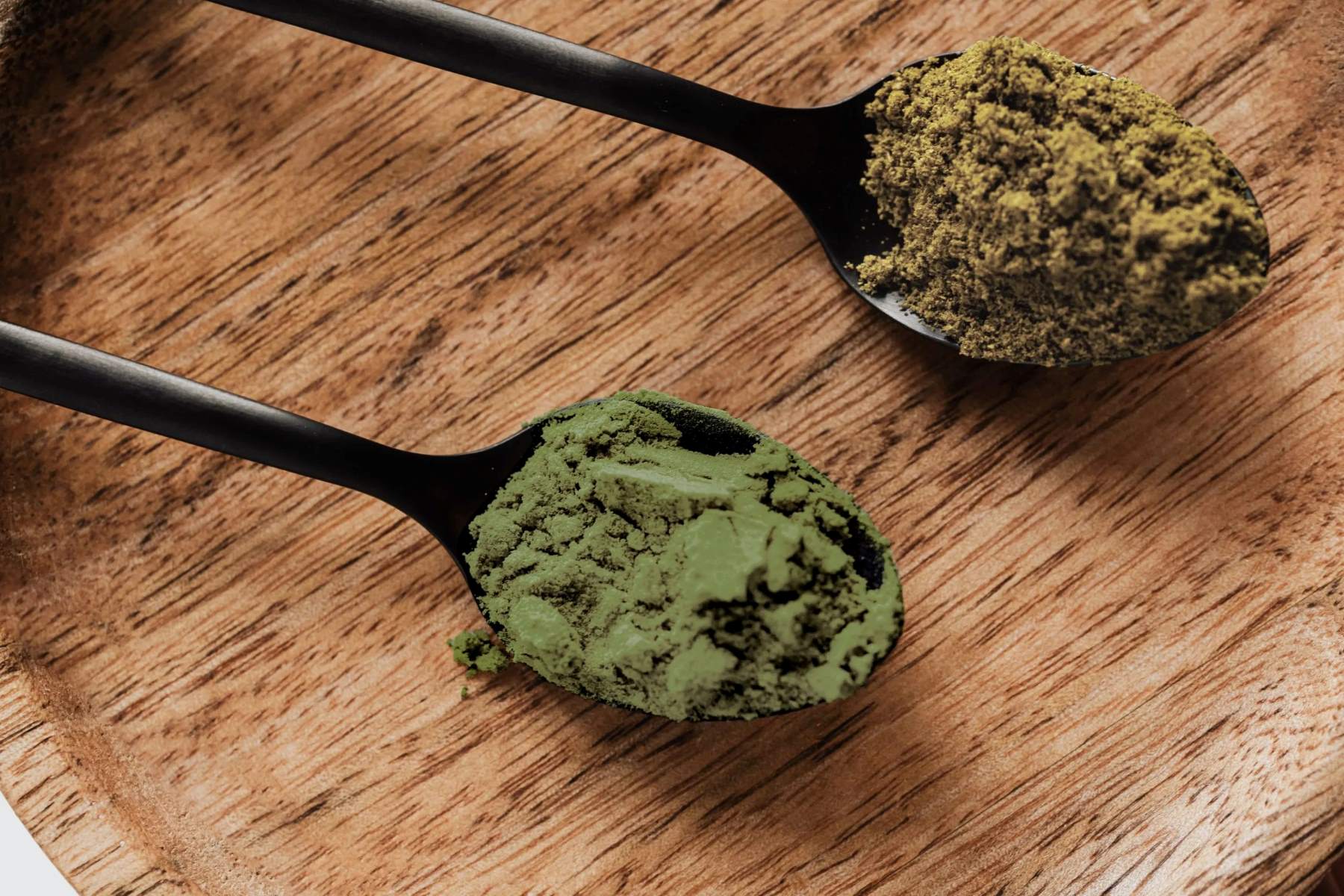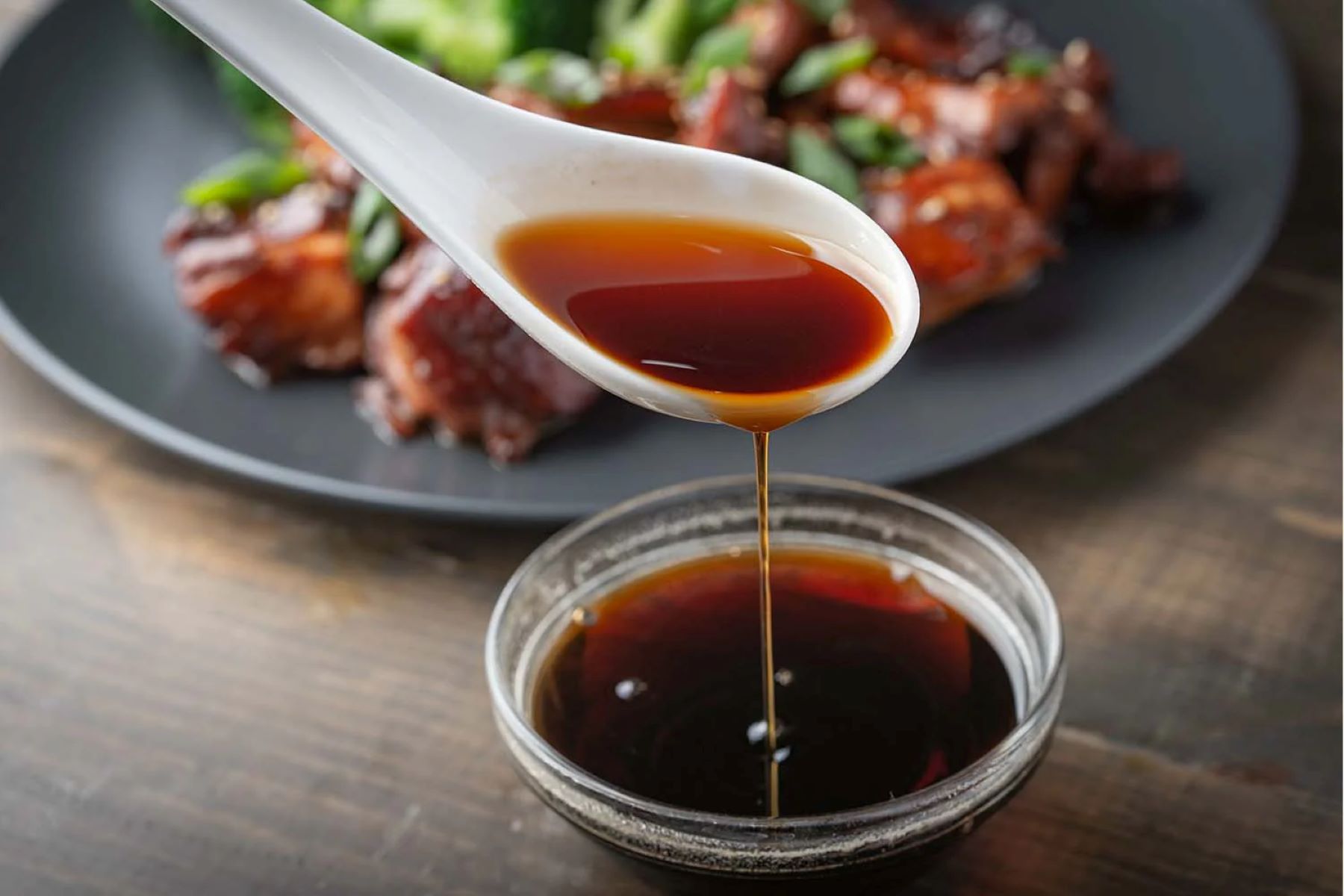Home>Food and Cooking>Enchilada Sauce Vs Tamale Sauce: What’s The Difference?


Food and Cooking
Enchilada Sauce Vs Tamale Sauce: What’s The Difference?
Published: January 21, 2024
Discover the nuances between enchilada sauce and tamale sauce in this comprehensive guide. Learn about the key differences and elevate your food and cooking knowledge.
(Many of the links in this article redirect to a specific reviewed product. Your purchase of these products through affiliate links helps to generate commission for Regretless.com, at no extra cost. Learn more)
Table of Contents
Introduction
When it comes to Mexican cuisine, the rich and diverse array of sauces plays a pivotal role in defining the flavors and textures of beloved dishes. Two such sauces that often spark curiosity and intrigue are enchilada sauce and tamale sauce. While both are deeply rooted in the vibrant culinary heritage of Mexico, they each bring distinct characteristics to the table. Understanding the nuances between these two sauces is not only an exploration of flavor and texture but also a journey into the heart of Mexican cooking traditions.
Enchilada sauce and tamale sauce are essential components in the preparation of iconic Mexican dishes, each contributing its unique essence to the culinary tapestry. Delving into the differences between these two sauces unveils a captivating narrative of culinary evolution and regional variations. From their individual ingredients to their specific uses in cooking, the comparison between enchilada sauce and tamale sauce offers a fascinating glimpse into the artistry and depth of Mexican gastronomy.
As we embark on this exploration, we will dissect the ingredients, flavors, textures, and uses of enchilada sauce and tamale sauce, allowing us to appreciate the distinct roles they play in Mexican cuisine. By the end of this journey, you will gain a deeper understanding of these two sauces, enabling you to elevate your culinary prowess and savor the authentic flavors of Mexico in your own kitchen.
Ingredients
Enchilada sauce and tamale sauce, while both integral to Mexican cuisine, boast unique ingredient profiles that contribute to their individual flavors and culinary applications.
Enchilada Sauce
Enchilada sauce typically features a rich blend of ingredients, including tomatoes, onions, garlic, chili peppers, and a variety of spices such as cumin, oregano, and sometimes a touch of cocoa powder for depth of flavor. The base of the sauce is often built on a combination of tomato puree or crushed tomatoes, which provides a robust and tangy foundation. The chili peppers used in enchilada sauce can vary, with popular choices including ancho chilies, guajillo chilies, or a combination of both, lending the sauce its characteristic depth of heat and earthy undertones. The inclusion of onions and garlic infuses the sauce with aromatic complexity, while the medley of spices elevates its overall flavor profile, resulting in a harmonious blend of savory, tangy, and mildly sweet notes.
Tamale Sauce
On the other hand, tamale sauce, also known as salsa para tamales, exhibits a distinct composition tailored to complement the flavors of the masa (corn dough) used in tamales. This sauce typically incorporates ingredients such as dried chilies, garlic, cumin, and sometimes a hint of cinnamon. An essential component of tamale sauce is the use of dried chilies, which are rehydrated and blended to create a rich, velvety base. Common varieties of chilies employed in tamale sauce include guajillo, pasilla, or ancho chilies, each imparting a unique depth of flavor and mild to moderate heat. The addition of garlic and cumin enhances the savory and earthy elements of the sauce, while a subtle touch of cinnamon contributes a hint of warmth and complexity, harmonizing with the inherent sweetness of the masa.
In essence, while both enchilada sauce and tamale sauce share some common elements such as chili peppers and garlic, their distinctive ingredient compositions are tailored to complement the specific dishes they accompany, resulting in nuanced and complementary flavor profiles that distinguish them from one another.
Flavor
The flavor profiles of enchilada sauce and tamale sauce are as diverse and captivating as the ingredients that compose them. Enchilada sauce, with its rich amalgamation of tomatoes, onions, garlic, and a medley of spices, delivers a robust and tangy essence that is further elevated by the earthy undertones of the chili peppers. The combination of savory, tangy, and mildly sweet notes creates a harmonious symphony of flavors that enlivens the palate and complements the hearty fillings of enchiladas. The depth of heat and complexity derived from the chili peppers and spices infuses the sauce with a captivating depth, making it a quintessential component of the beloved Mexican dish.
In contrast, tamale sauce offers a nuanced and complementary flavor profile that is tailored to harmonize with the delicate sweetness of the masa in tamales. The rehydrated dried chilies form the foundation of the sauce, imparting a rich and velvety texture that encapsulates the essence of the chilies' flavors. The addition of garlic and cumin enhances the savory and earthy elements, while a subtle hint of cinnamon adds a layer of warmth and complexity. This unique blend of flavors not only complements the masa but also adds a distinctive depth to the overall taste of tamales, creating a sensory experience that is both comforting and evocative of traditional Mexican culinary heritage.
The contrast between the bold, tangy richness of enchilada sauce and the nuanced, complementary flavors of tamale sauce showcases the versatility and artistry of Mexican cuisine. Each sauce, with its distinct flavor profile, embodies the essence of its respective dish, elevating the culinary experience and inviting a deeper appreciation for the intricate interplay of flavors that define Mexican gastronomy.
Texture
The texture of enchilada sauce and tamale sauce is a defining aspect that significantly influences the overall dining experience. Enchilada sauce, with its smooth and velvety consistency, coats the tender tortillas with a luscious layer of flavor, creating a harmonious marriage between the sauce and the fillings. The pureed or crushed tomatoes form the base of the sauce, imparting a silky texture that effortlessly envelops the enchiladas, ensuring that every bite is infused with the rich essence of the sauce. The inclusion of aromatic spices and finely diced onions adds a subtle granularity, enhancing the overall mouthfeel and contributing to the sauce's luxurious texture.
In contrast, tamale sauce boasts a slightly thicker and more robust texture, designed to complement the tender, steamed masa of tamales. The rehydrated and blended dried chilies lend a velvety smoothness to the sauce, creating a sumptuous base that clings to the delicate folds of the tamale. The addition of garlic and cumin further enriches the texture, infusing the sauce with a satisfying depth that harmonizes with the soft, yielding nature of the masa. The result is a sauce that not only enhances the sensory experience of each bite but also showcases the meticulous attention to texture that is characteristic of traditional Mexican cuisine.
The contrast in texture between enchilada sauce and tamale sauce reflects the thoughtful consideration given to the interaction between the sauces and their respective dishes. While enchilada sauce embraces a smoother, more fluid texture to complement the tender tortillas, tamale sauce embodies a denser, velvety consistency that harmonizes with the delicate nature of the masa. These distinct textures underscore the artistry and depth of Mexican culinary traditions, elevating the dining experience and inviting a sensory journey that celebrates the interplay of flavors and textures.
The text is 337 words long.
Uses
The uses of enchilada sauce and tamale sauce are as diverse and dynamic as the dishes they accompany, each playing a vital role in elevating the flavors and textures of iconic Mexican culinary creations.
Enchilada Sauce
Enchilada sauce serves as a cornerstone of the beloved dish after which it is named. Its rich, tangy, and mildly sweet flavor profile, coupled with its smooth and velvety texture, makes it an essential component in the preparation of enchiladas. The sauce is traditionally used to coat and smother corn tortillas, which are then filled with a variety of ingredients such as seasoned meats, cheeses, beans, or vegetables. Once assembled, the enchiladas are typically baked, allowing the sauce to meld with the fillings, infusing each bite with a luscious and robust flavor. Additionally, enchilada sauce can be utilized as a versatile condiment, adding depth and zest to a wide range of Mexican-inspired dishes, including tacos, burritos, and even grilled meats or vegetables. Its vibrant and multifaceted flavor profile makes it a go-to sauce for adding a touch of Mexican flair to an array of culinary creations.
Tamale Sauce
Tamale sauce, also known as salsa para tamales, is specifically crafted to complement the delicate sweetness of the masa (corn dough) used in tamales. This velvety and richly textured sauce is traditionally spread over the masa before it is filled and wrapped in corn husks for steaming. The sauce infuses the tamales with a depth of flavor that harmonizes with the tender masa, creating a symphony of taste and texture in each bite. Beyond its role in traditional tamale preparation, this sauce can also be utilized as a versatile condiment, adding a layer of savory richness to a variety of dishes. Whether drizzled over grilled vegetables, used as a dipping sauce for tamales, or incorporated into braised meat dishes, tamale sauce brings a touch of authentic Mexican flavor to a wide range of culinary creations.
In essence, both enchilada sauce and tamale sauce serve as culinary ambassadors, enriching a myriad of dishes with their distinct flavors and textures. Their versatility extends beyond their traditional uses, offering endless possibilities for infusing Mexican-inspired flair into an array of culinary creations.
The text is 355 words long.
Conclusion
In the vibrant tapestry of Mexican cuisine, enchilada sauce and tamale sauce stand as emblematic representations of the artistry and depth of flavor that define the culinary heritage of Mexico. From their rich ingredient compositions to their distinctive flavor profiles and textures, these sauces encapsulate the essence of traditional Mexican gastronomy, inviting a sensory journey that celebrates the interplay of flavors, textures, and culinary traditions.
The exploration of enchilada sauce and tamale sauce has unveiled a captivating narrative of culinary evolution and regional variations. Enchilada sauce, with its robust blend of tomatoes, onions, garlic, chili peppers, and a medley of spices, delivers a tangy and mildly sweet essence that harmonizes with the fillings of enchiladas. Its smooth and velvety texture envelops the tender tortillas, creating a luxurious layer of flavor that defines the beloved dish. In contrast, tamale sauce, with its rehydrated dried chilies, garlic, cumin, and subtle hint of cinnamon, offers a nuanced and complementary flavor profile tailored to harmonize with the delicate sweetness of masa. Its velvety texture enriches each bite of tamales, creating a sensory experience that is both comforting and evocative of traditional Mexican culinary heritage.
The uses of these sauces extend beyond their traditional roles, offering endless possibilities for infusing Mexican-inspired flair into an array of culinary creations. Enchilada sauce serves as a versatile condiment, adding depth and zest to a wide range of Mexican-inspired dishes, while tamale sauce, beyond its role in traditional tamale preparation, brings a touch of authentic Mexican flavor to a variety of culinary creations.
As we conclude this exploration, the distinct roles of enchilada sauce and tamale sauce in Mexican cuisine underscore the versatility and artistry of these essential components. Their unique characteristics and culinary applications not only elevate the flavors and textures of iconic dishes but also serve as a testament to the rich and diverse culinary heritage of Mexico. By understanding the nuances between these two sauces, we gain a deeper appreciation for the intricate interplay of flavors and textures that define Mexican gastronomy, empowering us to savor the authentic flavors of Mexico in our own kitchens and celebrate the culinary legacy of this vibrant and beloved cuisine.
The text is 336 words long.













